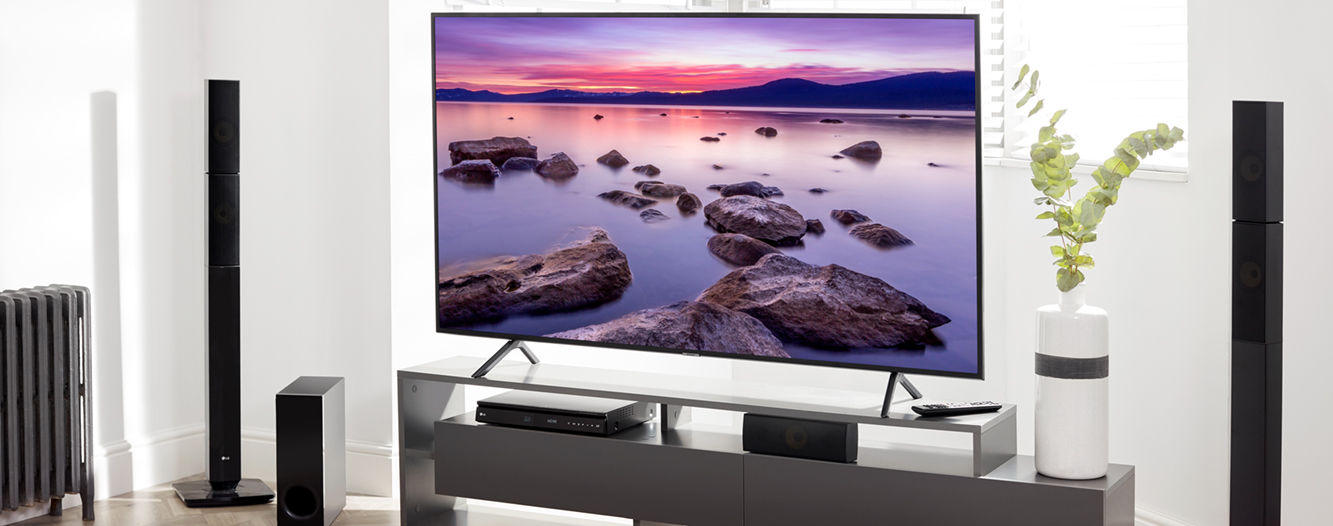What should we look for when choosing a TV? We tell you what are the 4K certifications and the truth about the white sub-pixel. 4K certifications are a good way to differentiate TVs that offer great image quality from more modest ones. And today everyone has 4K resolution and HDR system. This makes it harder for users to know which models offer better performance. However, not all 4K certifications are the same. So it is important to know what kind of tests they perform and if they guarantee that the TV has great image quality.
On the other hand, we have "the controversy" of the white sub-pixel. Some brands speak of the white sub-pixel as a negative feature for the image quality of television. Magnifiers are being used in some outlets to visualize that white sub-pixel and communicate that the fact that the pixel is RGB (without white sub-pixel) generates better colours, brightness and sharpness. However, this is not so. Let's try to clarify it.
MORE AND BETTER PIXELS
You cannot deny that the more pixels a screen has, the better the image quality will have to be. The pixel is the minimum unit of image and the smaller it is, the more of them will fit on the TV screen and can show finer details of the image. Hence, the resolution of the televisions has been increasing over the years. We have gone from the Standard Definition or SD (720 x 575 pixels) to the current 4K (3840 x 2160 pixels), passing through the HD (1024 x 720 pixels) and Full HD (1920 x 1080 pixels). Soon the standard will become 8K.
But is the number of pixels all that matters to get the best image quality? The answer is no. With a current 65-inch 4K TV, about 30 cm viewing distance, very fine details can be reproduced and viewed faithfully. However, they are more difficult to perceive as we move away from the screen between 1 and 2 meters.
On the contrary, our eye is capable of perceiving, even several meters away, different shades of colours, scales of brightness, and even the flickering of a motion picture recorded at 50 frames per second or less. Therefore, the technologies associated with the screens of the televisions continue to improve, not only to include more pixels but so that they are of “Better Quality”.
This leads us to wonder, what are the "Best Quality" pixels? They are pixels capable of reproducing increasing colour spaces. Also dynamic ranges of brightness and higher greyscales with smaller intervals.
Pixels capable of reproducing images at a faster speed to show sharper moving images. In short, pixels that allow us to reproduce an image as similar as we would see it with our own eyes. Or, with the exact tones and dynamics of how the film director wants us to see those contents.
This is why, when we review the characteristics of television we see other prominent terms. For example, it is very common to read terms such as WCG (Wider Color Gamut), BT.2020 or the already known HDR (High Dynamic Range) on advertising posters.
For a TV to be able to work with 4K resolution, different HDR formats and with 10 or even 12 bits, you need a powerful image processor. A chip like the Alpha 9 and Alpha 7 from LG, present on their OLED and SuperUHD TVs with Nano cells respectively. Specifically, Alpha 9 processors, present in OLED C8 TVs and higher, are the only ones to date capable of receiving 4K UHD television signals, with HDR, HFR, WCG BT.2020 and Dolby Atmos sound.
As we have seen, the quality ratio between video signals in UHD and 4K screens is not reduced only to the number of pixels on the screen. Other standards such as colour spaces, HDR, HFR formats and the number of bits among others also come into play.
HOW DO WE KNOW WHICH MODELS MEET ALL THESE CHARACTERISTICS? WITH 4K CERTIFICATIONS
Several companies certify television screens that allow you to certify if a 4K TV is compatible with the highest quality UHD signals. Some examples are UL in the United States, Intertek in the UK or TÜV in Germany.
But among them we can highlight Eurofins, a 4K certification company recognized throughout Europe. It certifies both the screen resolution of a 4K TV and its compatibility concerning the ability to reproduce signals in UHD. This includes WCG, HDR and HFR, both for signals connected to the TV via HDMI, as well as USB, Streaming and Antenna.
What we should know is that not all 4K certification companies are equal. Some focus only on aspects of the screen. Others, even, are self -certification companies. That is, it is the television manufacturer itself that performs its tests, presenting a final report to obtain the certificate. Of course, these are less demanding, generally, and less objective.
IMAGE QUALITY AND ENERGY EFFICIENCY: RGBW
To reduce energy consumption without losing image quality, some televisions have begun to incorporate a 4 white sub-pixel or W, to the traditional R, G, B.
These screens are called RGBW, some of which, in high-end models, are also compatible with HFR (100 Frames per second), Dolby Vision HDR, Technicolor HDR and Dolby Atmos sound. And, of course, they are 4K TV price in Bangladesh, compatible with UHD, 10bit, WCG, HDR video signals,
In short, when choosing which television to buy, we have to know, 4k tv price in Bangladesh, smart tv price in Bangladesh, we must pay attention to both resolution and compatibility with higher quality formats. The generation of WRGB screens provides better contrast and definition, optimizes 38% brightness, improves colour volume and reduces energy consumption. In addition, it is convenient to verify 4K certifications.





